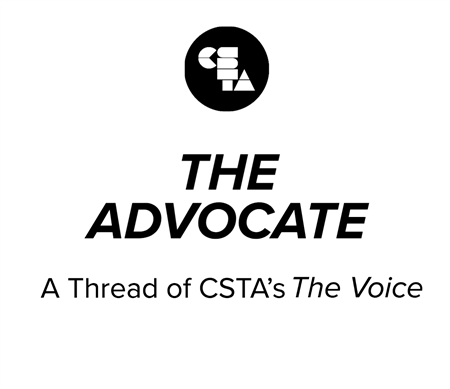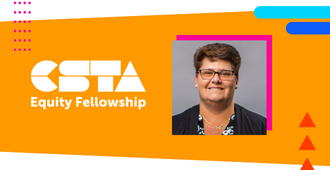
During the 2020 CSTA conference, Rafi Santo (CSforALL), Todd Lash (University of Illinois and a 2019-2020 CSTA Equity Fellow) and I were tasked with facilitating a virtual Birds of a Feather session centered around the topic of White Teachers as Anti-Racist Allies in CS Education.
Full Story
During the 2020 CSTA conference, Rafi Santo (CSforALL), Todd Lash (University of Illinois and a 2019-2020 CSTA Equity Fellow) and I were tasked with facilitating a virtual Birds of a Feather session centered around the topic of White Teachers as Anti-Racist Allies in CS Education.
In our initial discussion and brainstorming around this BOF, we recognized the tremendous task of creating a white affinity space virtually, and, more challenging, in only 45 minutes. Affinity groups, including white affinity groups, have been studied and affirmed within research on race education. Michael and Conger (2009) share that the objective for affinity groups is “for people with some shared experience to have an opportunity to collectively reflect on their realities.”
The norms to guide our conversation are highlighted below. Our goal was to create a safe space to share and learn, while also honoring that participants may have been joining this conversations in different places in their anti-racist ally journey.
Michael works as part of the Culturally Situated Design Tool team, with a focus on broadening participation in CS Education and social justice. He highlighted his work with pH Empowered, a project that used computer science as a means to build a coalition and broaden participation.In this particular project, several young women channeled their interests in fashion and cosmetology to create an experience centered around cosmetologists, braiders, and those involved in the natural hair movement. The team worked with the women to develop a pH visualizer, connected to LEDs, in a project based approach to figure out how to test the pH of different hair products.
In pH Empowered, the team involved community members, including entrepreneurs and a local criminal justice organization to test, iterate, and debug the pH sensor. Michael shared that his view of being a co-conspirator or accomplice in anti-racist work involves bringing people together, treating computing as an intermediary to build relationships to further this work.
One of the most powerful statements from the session was from Christy, and she shared that she “does not want an ally, (she) wants a co-conspirator. Accomplices and co-conspirators stay mentally and physically present.” This means finding accountability partners, and tapping people who are not physically or mentally present in an affinity group. Most importantly, it is critical to stop defensiveness, which automatically shuts down the opportunity to learn. Finally, she shared that it is critical that white co-conspirators stop trying to “absolve themselves of guilt.” That is, rather than talking about what we’re doing, instead leaning into what really makes a difference: the work.
Want to experience the whole session? CSTA+ Members can access the entire recording by logging in at csteachers.org.



